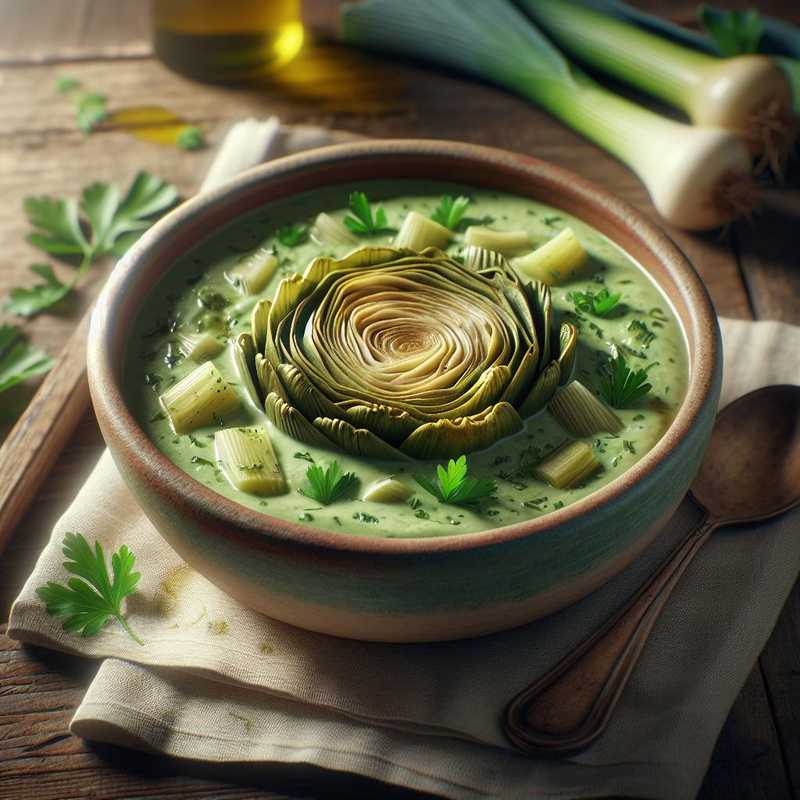Artichoke and Leek Velouté
17/11/2023I can provide you with a recipe for an Italian-style artichoke and leek velouté. Here are the ingredients and the procedure:
Ingredients
- Artichokes, about 4 medium-sized, cleaned of stems and the tougher outer leaves
- Leeks, 2 large, only the white and light green parts, sliced into rounds
- Potatoes, 2 medium-sized, peeled and diced
- Vegetable broth, about 800 ml
- Extra virgin olive oil, 2 tablespoons
- Garlic, 1 clove
- Salt and pepper to taste
- Fresh parsley, chopped, for garnish
- Cooking cream or ricotta cheese, optional, to make the velouté creamier
Preparation
- In a large pot, heat the extra virgin olive oil and sauté the garlic for a few minutes until it turns golden. Then, remove the garlic.
- Add the sliced leeks and fry until they become soft and translucent.
- Meanwhile, clean the artichokes by removing the tough outer leaves and stems, cutting them into wedges and removing the fibrous inner parts. Dip the wedges in water with lemon juice to prevent them from blackening.
- Add the artichokes and potatoes to the pot with the leeks, stir, and let them flavor for a couple of minutes.
- Pour the vegetable broth into the pot to cover all the ingredients, bring to a boil, reduce the heat and simmer covered for about 30 minutes, until the artichokes and potatoes are tender.
- Remove the pot from the heat and, using an immersion blender, blend everything until you get a smooth and uniform cream. If you’re using plant-based cream or ricotta cheese, add it now for an even creamier texture. Season with salt and pepper.
- Bring the velouté back to the stove to heat it up, then serve garnished with chopped parsley and a drizzle of raw extra virgin olive oil.
Remember that if you don’t have all the listed ingredients, you might need to procure them. Here’s a curiosity: in Italy, artichokes are highly valued and used in various dishes of the Mediterranean regions, where the tradition often combines them with risottos and pasta, but also in delicious veloutés like the one I’ve described. Buon appetito!
